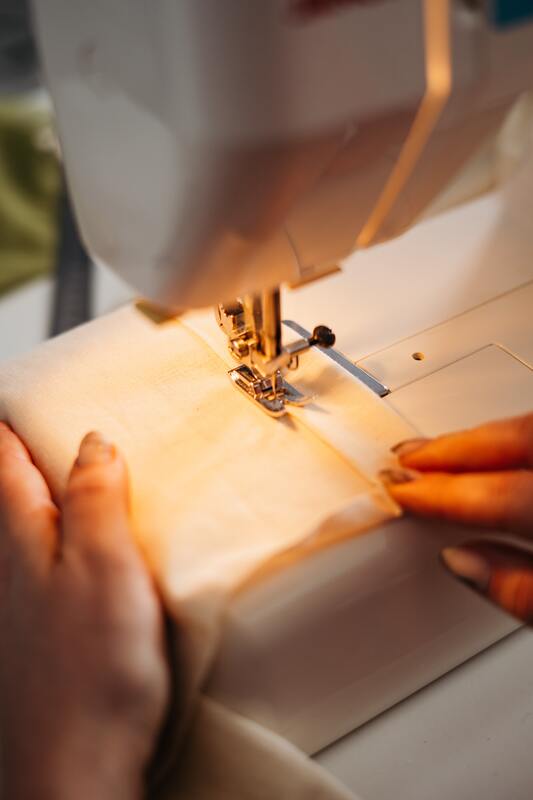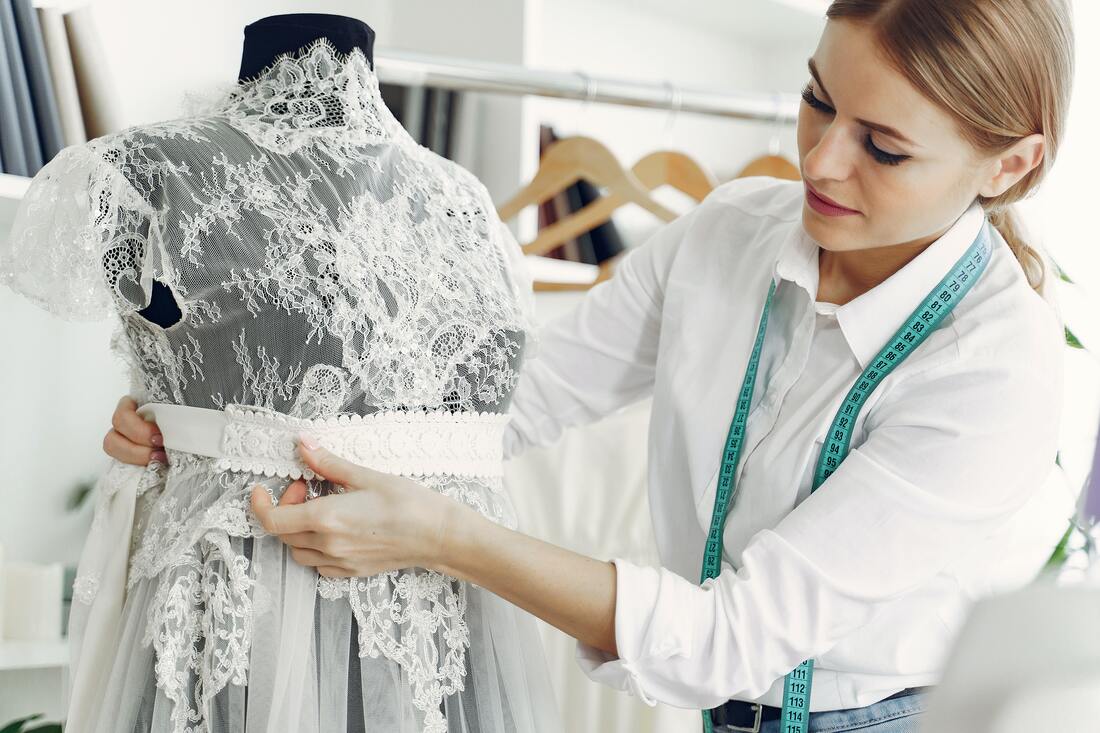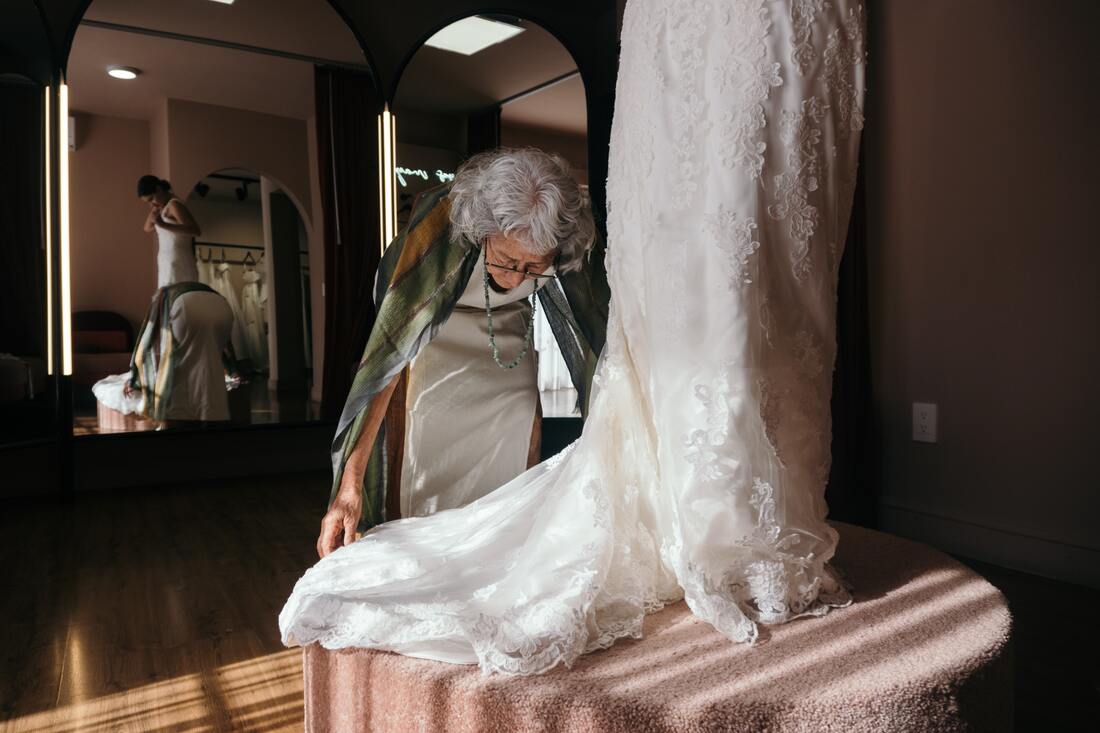|
A while back, we shared a blog about bridal gown alterations. With the spring and summer season upon us, it felt like time to update and remind you about what you need to know, and consider when you've purchased a gown that may need to be altered. We've never met a bride who wanted an ill-fitted gown... not once. You search, you set up Pinterest boards, you take screenshots and you try on possibilities until you hear The Love Theme from Romeo and Juliet and you make a purchase. According to The Knot, most gowns will need some sort of adjustment or alteration and the scope will depend on how many alterations, what kind of altering, where you purchased your gown, and the timeline/scheduling of your tailor/seamstress. KEy Things to Remember> Altering any garment is a process. A seamstress is literally fitting a gown to your body. She's molding the dress's structure, shaping the fabric and making sure that dress looks like it was custom made just for you. Getting the perfect fit rarely happens with just one fitting. It's a process that takes tweaking and retweaking. > Alterations take time... The average bride will have between 3 - 5 fittings based on the intricacies of the gown and types of alterations. Sometimes there are more than half a dozen fittings. You'll want to plan on making those trips to try on your gown, be pinned in again based on new adjustments, try it on with your shoes and veil, and so on. It is not an easy job. It's surgery. Seamstresses are, in some cases, taking your dress apart and putting it back together. > ... & Timing is Important. Bring your dress to be altered too soon and your weight may fluctuate by the time of your wedding. It happens. No judgement. Wait too late and your seamstress' schedule may be packed. See Communicate below. > Seamstresses have a backlog. When your dress is pinned and fitted to you the first time, you'll then wait a few weeks before you see it again. This may be due to the number and types of alterations, but it's most certainly because you are not their only client or dress. Your seamstress is not working solely on your gown or bridesmaids dresses. She is slammed, because this is how she makes a living and because this is delicate work. She needs the time to do that delicate work on every gown, not just yours. > What & Who to Bring With You to Fittings. Make sure that your seamstress sees the entire vision of your attire. Bring your veil, any head or hair pieces, your jewelry and shoes, and any other visuals that will inform him/her. As for people, bring your maid or matron of honor, if possible, and a trusted friend or family member who can advise and support you. > Alterations are not free. Things cost money. When you work, you expect to be paid - whether you are nursing a patient back to health, managing a project on a timeline, adding structural boning to the bodice of a wedding gown, or removing 350 tiny beads from the train of a gown. Seriously! Think about all the requests that a bride can make: + Add 500 crystal beads or sequins. + Remove the lace that came with the dress and replace it with my grandmother's antique lace. + Create a keyhole in the back where there wasn't one. + Shorten the sleeves. + Lengthen the hem. These are complex tasks and seamstresses expect to be paid for their experience, their knowledge and expertise and their careful, intricate, detailed work. The seamstress is an independent contractor, so when you're working with her and paying her, you're helping feed her family. Some big box stores have their own in-house seamstresses who get paid through the company. Using an independent seamstress like those we suggest for our brides often means you will save money. The cost of alterations can range anywhere from $20 to $500+, and will depend greatly on the dress and what has to be done. > Show Patience. Losing patience with any wedding vendor will never serve you well. So don't huff and complain to your seamstress. More than one fitting is not the beginning of your dress being destroyed. It's an absolute part of the process. As she molds your dress to your body, she makes those adjustments by hand in many cases. Understand that some wants for your gown are just not possible because of the way the dress is already cut and shaped.
> Communicate. It's important to trust your seamstress and be patient with the process, but don't fail to speak up if you find that something feels uncomfortable or ill-fitting, or not what you were expecting the end result to be. Keep the lines of communication open. She's there to help you and cannot read your mind. Ask questions, listen and keep talking. > Be Kind. That seamstress is your ally. Listen to what she's telling you about what can and cannot be done and trust her instincts. She's there to make you look fabulous in the gown you chose. Don't succumb to the temptation to go Bridezilla because you're under stress. Behaving badly is something you'll regret. Be kind! Why do we harp on kindness? Because it's a foundational unit of measurement - like centimeters of fabric. Your wedding is a big deal and every vendor you're working with wants your day to be perfect. Be more honey than vinegar and you'll remember the experience fondly and enjoy your day sooooo much more.
0 Comments
Your comment will be posted after it is approved.
Leave a Reply. |
Archives
July 2024
|




 RSS Feed
RSS Feed
